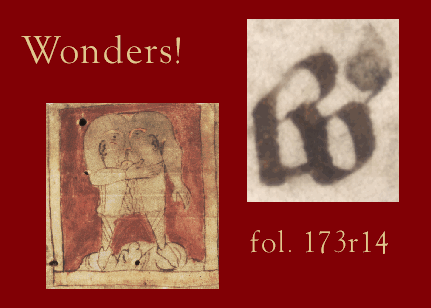
The technological complexities of this huge, distributed, electronic
archive accumulating around the manuscript have begun to engage the
theoretical and practical research interests of computer scientists,
library and information scientists, mathematicians, and statisticians
at the University of Kentucky. Because of its age, its broad cultural
appeal, and the various damage it has sustained by erasure, fire, and
restoration schemes, the Beowulf manuscript presents a number
of interesting problems whose solutions will apply to many other
fields. To make the electronic facsimile available to others in a
useful and usable form, a team at Kentucky that calls itself GRENDL
(Group for Research in Electronic ally Networked Digital Libraries) is
developing software that hypertextually links all related images in
the archive. A reader studying a given folio of Beowulf can
now superimpose enhanced, back-lit, or ultraviolet images over covered
or erased readings; bring in for comparison the corresponding
pages from a transcript, a collation, an edition, a translation, or
other popular portrayals; access an Old English glossary or a related
archaeological find; or initiate a bibliographical search and
retrieval of a related article. The program is obviously applicable
to any text and the British Library plans to use it for other
important documents in its incomparable collections.



